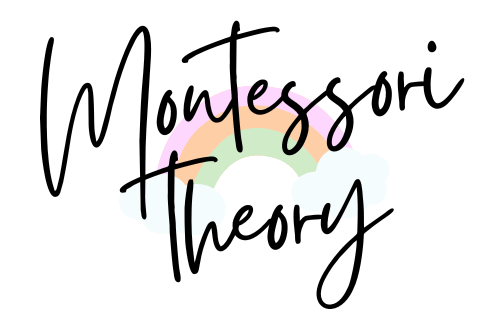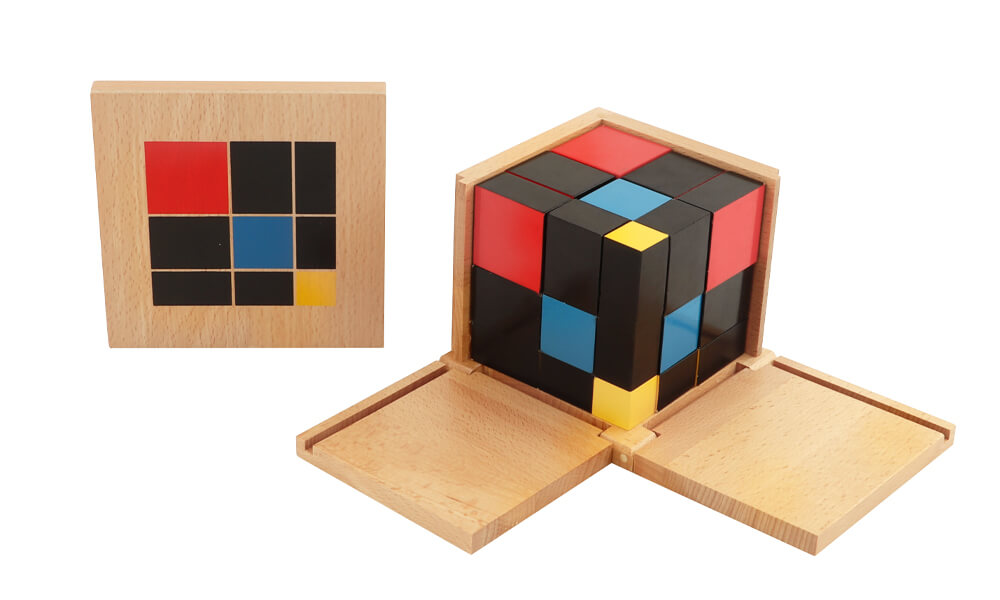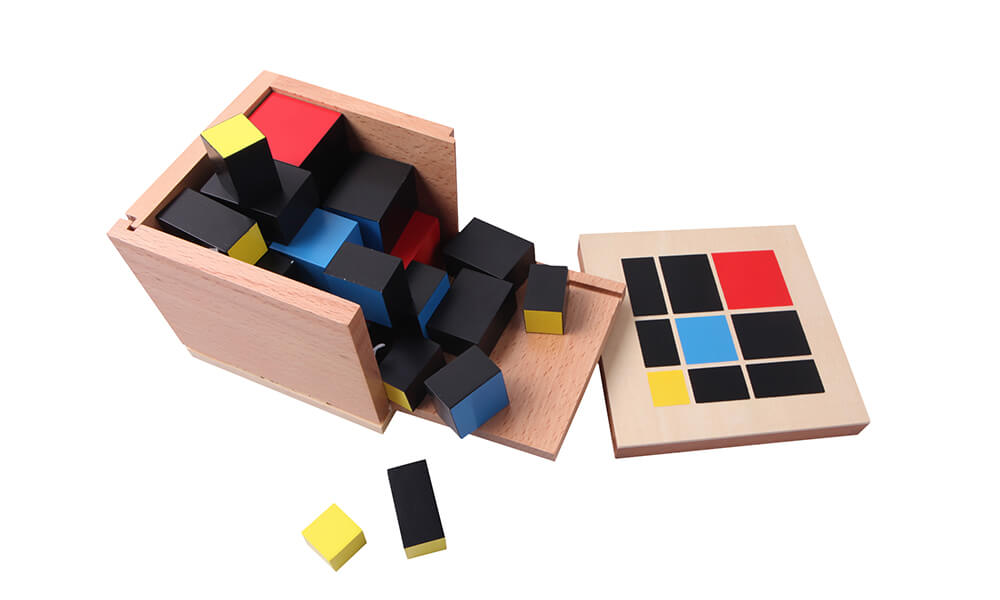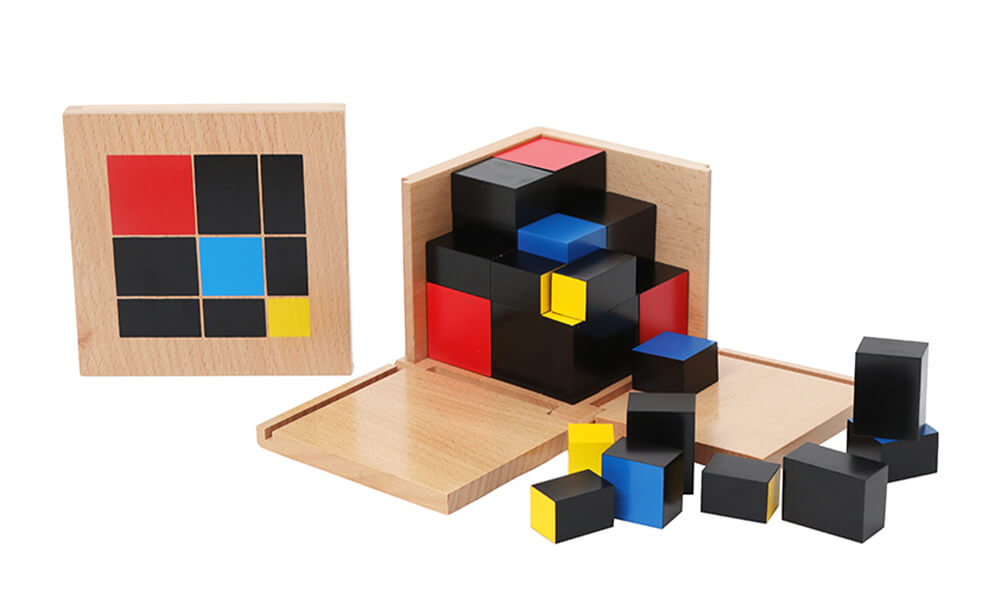The Montessori Trinomial Cube is an excellent sensorial material used in Montessori classrooms worldwide. This hinged wooden box contains 27 colored wooden blocks, consisting of three cubes and 24 prisms. The Trinomial Cube is not just a puzzle for children; it has a specific purpose in a Montessori classroom. In this article, we will explore what the Montessori Trinomial Cube is, how it is used, and its benefits for children.
What is the Montessori Trinomial Cube
The Montessori Trinomial Cube is a sensorial material that helps children develop their visual discrimination skills. It is designed to help children develop a sense of order, concentration, and coordination. The Trinomial Cube is made up of 27 blocks, consisting of 3 cubes and 24 prisms. The blocks come in various colors and sizes, and the child must deconstruct and reconstruct the Trinomial Cube using a specific method.
To work with the Trinomial Cube, the child is required to deconstruct and reconstruct it using a specific method while observing the unique characteristics of the material, particularly the pattern of the blocks.
Montessori Trinomial Cube Purpose
The purpose of the Montessori Trinomial Cube is to provide children with a concrete and visual representation of algebraic formulas. This educational tool helps children develop their understanding of advanced mathematical concepts such as finding the cube of a trinomial. It also improves children’s dexterity and hand-eye coordination while developing their concentration and fine motor skills.
By using the Trinomial Cube, children can develop their spatial reasoning skills and deepen their understanding of mathematical concepts. This can help them build a strong foundation for further learning in mathematics.
Montessori Trinomial Cube Presentation
The Trinomial Cube is an educational tool designed to develop spatial and mathematical skills in children. It consists of a box containing a variety of wooden and black prisms. These prisms include three wooden cubes in red, blue, and yellow, as well as eighteen square-based prisms.
The square-based prisms are divided into six sets, each containing three prisms. These prisms are colored in different combinations of yellow, red, and blue, with black bases, and are designed to match the height of each of the three wooden cubes. For example, there are three red and black prisms that match the height of the blue cube, and three yellow and black prisms that match the height of the red cube.
In addition, there are six black rectangular-based prisms that correspond to the edge of the red, blue, and yellow cubes. Finally, there are three wooden cubes in red, blue, and yellow.
When all the pieces are assembled, they form a cube of a trinomial (a+b+c)3. The square of the trinomial is painted on the lid. By working with the Trinomial Cube, children can develop their spatial reasoning skills, as well as their understanding of mathematical concepts such as the trinomial formula.
How is the Montessori Trinomial Cube Used?
The Montessori Trinomial Cube is typically introduced to children in the middle or end of their second year in a Montessori primary program. The child is given a lesson on how to deconstruct and reconstruct the Trinomial Cube using a specific method. The lesson is designed to help the child develop their visual discrimination skills, hand-eye coordination, and concentration.
During the lesson, the child is encouraged to note certain characteristics of the material, specifically the pattern of the blocks. The child pieces the blocks together to form patterns and reconstruct the cube, similar to the Binomial Cube lesson. The child is not introduced to any algebraic or advanced math vocabulary during this lesson, and the focus is on completing the puzzle.
Benefits of Using a Montessori Trinomial Cube
The Trinomial Cube offers several benefits to children who use it as an educational tool.
- Firstly, it can help prepare them for learning advanced mathematical concepts by providing a concrete and visual representation of algebraic formulas.
- Secondly, it can help refine a child’s dexterity and visual acuity as they manipulate the small prisms and cubes. This activity can also help develop fine motor skills, concentration, and hand-eye coordination.
- Additionally, the Trinomial Cube provides children with a conceptual understanding of numbers and formulas, which can help them better understand and apply these concepts in the future.
Overall, the Trinomial Cube is an excellent tool for children to develop a variety of skills and prepare for more advanced learning in mathematics.
How to introduce a Trinomial Cube to a child?
Introducing a Trinomial Cube to a child can be a fun and engaging activity. Here is a step-by-step guide on how to introduce it:
- Invite the child to the table and explain that you will be learning about the Trinomial Cube and how to find the cube of a trinomial.
- Remove the lid of the Trinomial Cube box and place it on the table facing up.
- Open one side of the box and gently remove all the blocks from the box one at a time.
- Sort the blocks by color order, making sure to leave space so that all the colors are visible.
- Show the child how to build the cube using the box’s lid. Begin with the red block and place it on the red color block on the box’s lid.
- Find a matching color prism and place it in the correct spot. Repeat this step, placing the color cubes one by one. Note that the top pattern should match the lid of the box.
- Place a hand on the first level to show the child it’s flat. Then, instruct the child to move this layer into the box.
- Once the first level is placed in the box, begin the second level and third level on top, using the box’s lid as a reference.
- When the second layer is complete, ask the child to move it into the box. Similarly, when the third layer is complete, ask the child to move it into the box.
- Close the sides of the box and close the lid.
- Finally, ask the child to repeat the activity to reinforce their learning.
Montessori Trinomial Cube Lessons & Exercises
FAQs
What age is appropriate for a child to use a Montessori Trinomial Cube?
The Trinomial Cube is typically used by children aged four to six years old.
Is the Montessori Trinomial Cube expensive?
The Montessori Trinomial Cube is relatively inexpensive compared to other Montessori materials.
Can the Montessori Trinomial Cube be used at home?
Yes, the Montessori Trinomial Cube can be used at home. It is a great tool for parents to support their children’s learning and development of spatial reasoning skills, problem-solving skills, and math concepts.
Are there variations of the Montessori Trinomial Cube?
Yes, there are variations of the Montessori Trinomial Cube, such as the Binomial Cube, which is a simpler version with only eight cubes.




